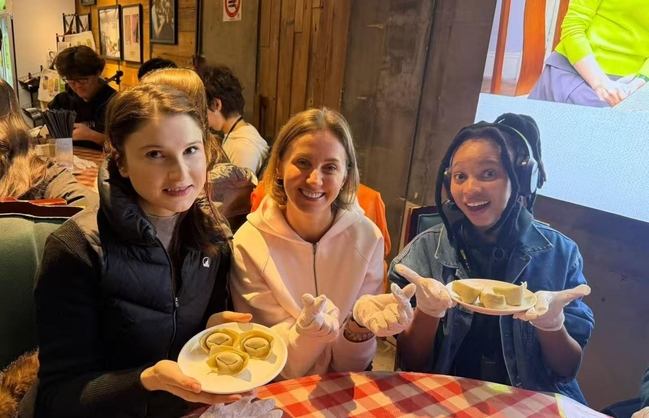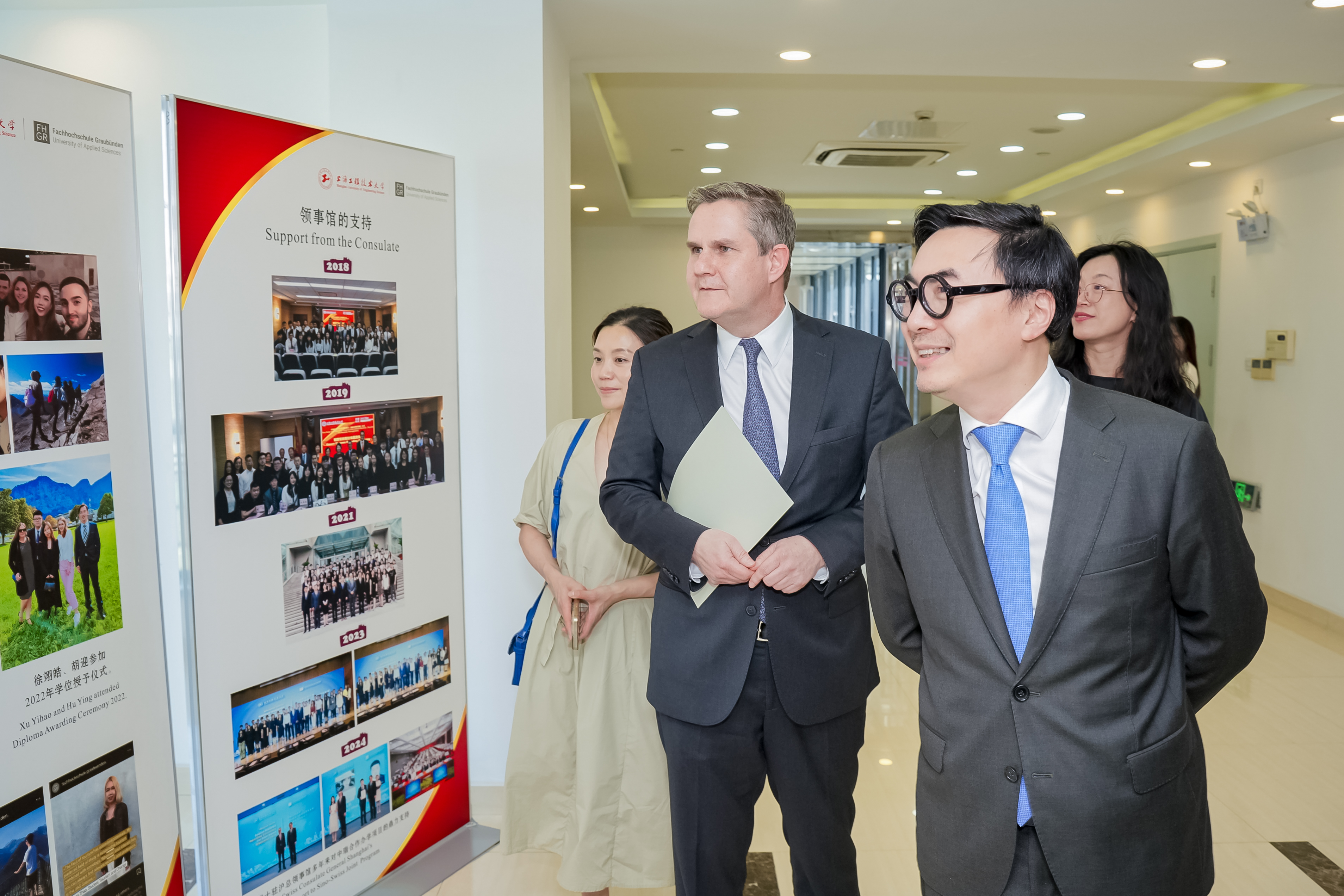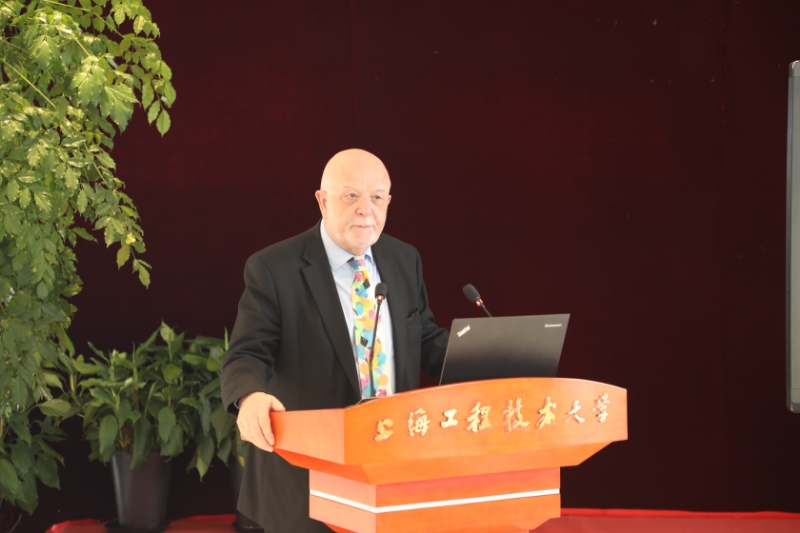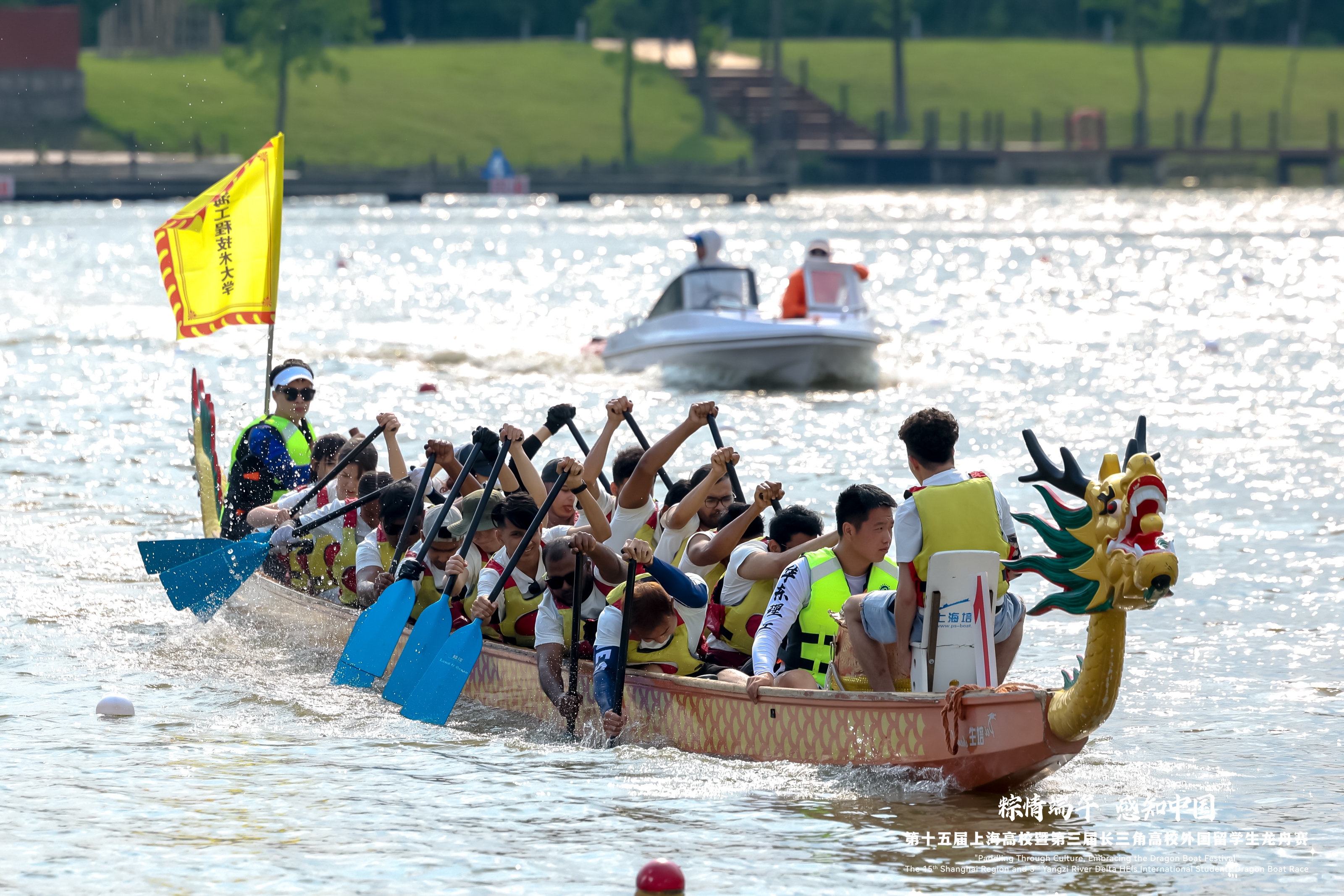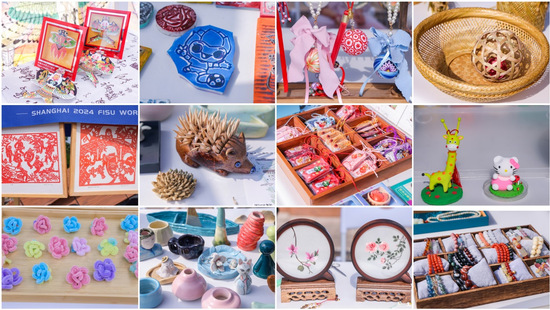
In the summer of 2025, students from SUES set foot on Australian soil in the Southern Hemisphere, entered the University of Sydney, and embarked on a one-month study journey. Centered on two core themes—Academic English & Cross-Cultural Communication and Business Communication & Leadership—the program provided an immersive platform for learning and cultural experience. From the classrooms of the University of Sydney to the city’s streets, participants gained triple growth in knowledge, skills, and global perspective. Let’s revisit this wonderful time filled with surprises together.
1. Diversified Courses: Dual Tracks in Academia and Business, Unlocking Active Learning
Leveraging the University of Sydney’s high-quality resources, the program offered two tailored course tracks for students of different majors, completely breaking the traditional "teacher lectures, students listen" model.
In the Academic English & Cross-Cultural Communication course, interactive discussions were the norm. When explaining cases, professors never gave direct answers to standard questions; instead, they asked students to form groups, design solutions, and debate ideas. Peers from around the world often proposed different viewpoints, and gradually, everyone realized: academia is not always about finding "the right answer", but rather the process of developing reasonable explanations.
Group collaboration ran through the entire course. For example, when researching "how cultural differences impact communication", students had to coordinate tasks online and offline. They not only overcame differences in language habits but also learned to listen, compromise, and integrate perspectives—unconsciously honing their cross-cultural collaboration skills. The program also adopted a "flipped classroom" model: professors recorded lecture videos in advance for students to study before class, while in-class time was dedicated to tackling difficult points and doing practical exercises. This gradually helped students develop habits of proactive time management and in-depth literature research.

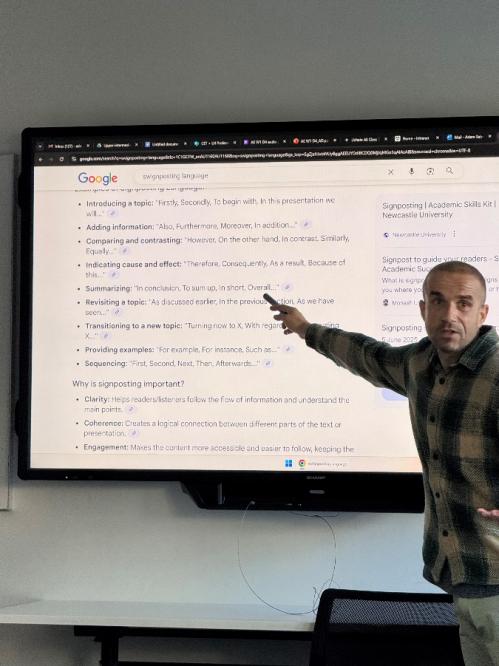
The Business Communication & Leadership course focused on practical application. Professors had both strong academic backgrounds and hands-on experience in multinational companies, and they always paired theories with real cases. When discussing "multinational enterprise management", they shared true stories of employee communication in overseas companies; when teaching "international business negotiations", they divided students into "multinational teams" to simulate cross-border merger scenarios, requiring them to develop strategies based on different national cultures.
Here, students systematically learned business-specific expressions and mastered practical sentence patterns for chairing meetings, resolving conflicts, and making suggestions. The most challenging part was the "group formal presentation" segment, which allowed everyone to fully apply their knowledge: designing PPTs, preparing interactive questions, controlling speaking speed, and managing body language—all done entirely in English. Many students admitted afterward, "My confidence in public speaking has skyrocketed!"
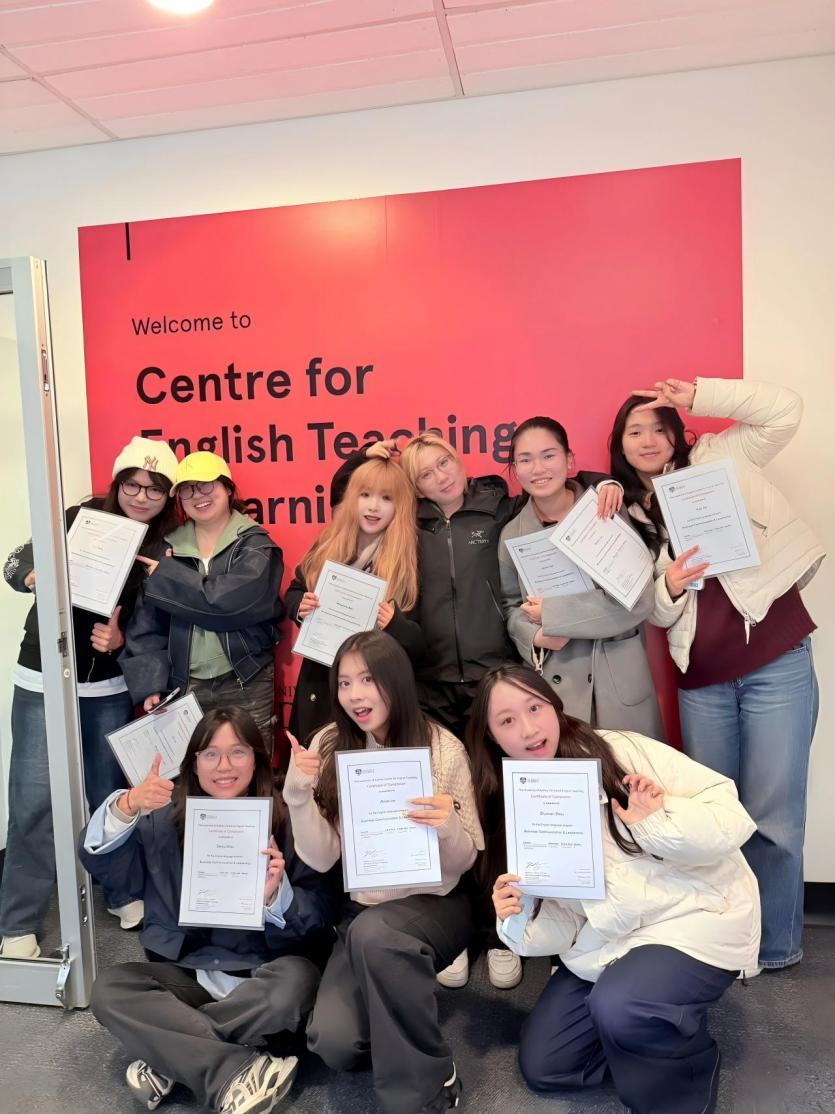
2. Immersive Experience: From Campus to City, Understanding Diversity Through Exploration
The University of Sydney and the city itself served as the program’s "second classroom", and students’ free time was filled with cultural exploration.
The University of Sydney campus exudes charm: its Gothic-style Quadrangle building is affectionately nicknamed "Hogwarts of the Southern Hemisphere", and jacaranda flowers carpet the campus paths—romantic and comforting. Fisher Library, one of the largest university libraries in the Southern Hemisphere, covers all disciplines and offers study areas, group discussion rooms, and even a coffee corner, allowing students to choose their favorite study spots freely.
Beyond campus, Sydney’s unique trait of "modernity coexisting with nature" was fascinating. Students visited the Sydney Opera House to experience the charm of Western classical art and explored museums to learn about Aboriginal culture and immigration history. During festivals, they never missed the fireworks display over Sydney Harbour—bright sparks reflecting off the Opera House and Harbour Bridge, with crowds cheering enthusiastically; the lively, warm atmosphere was unforgettable. They also waited for sunsets at Bondi Beach, chatting with Australian friends about their "no worries" attitude toward life. These experiences took them beyond textbooks, letting them truly feel the warmth of Australian culture.

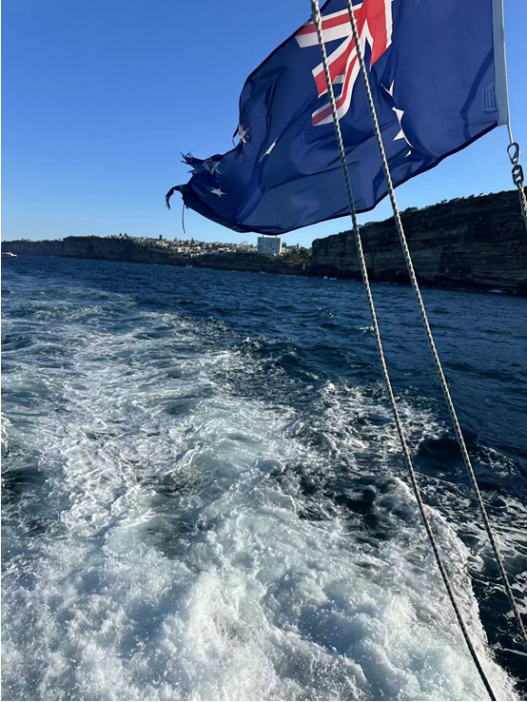
3. Homestays: Mini Classrooms for Cross-Cultural Exchange, Gaining Warmth and Growth
The homestays recommended by the program became "Sydney homes" for many students. They not only provided warm meals and comfort but also fostered quiet growth through daily interactions.
One student stayed with an elderly couple in a small villa, with a neatly trimmed lawn in front of the door and potted succulents on the white stone steps; the rustle of eucalyptus leaves became a daily backdrop. The couple had prepared a Sydney map marked with scenic spots on the desk in advance. Every morning, the student would find a ritualistic breakfast: soft-boiled eggs with bacon on a light-colored plate, avocado toast on a wooden tray, and hot milk with cute latte art.
What was more heartwarming was how the couple remembered the student’s preferences. Knowing she liked spicy food, they soon added a small dish of homemade chili sauce to the table—crushed chili peppers mixed with diced tomatoes, spicy yet sweet. When serving pasta, the grandfather would even toss the student’s portion with extra chili sauce separately; seeing her enjoy the meal, his eyes lit up with pure joy.
Another student stayed with an enthusiastic couple, who invited them to cook dinner together. At the table, the couple asked curiously about Chinese traditions: how to paste Spring Festival couplets and how to eat mooncakes during Mid-Autumn Festival. When the student cooked a simple dish of scrambled eggs with tomatoes, the couple exclaimed, "Who knew simple ingredients could taste so good!" A home-cooked meal quietly bridged the gap between them.
In the process of sharing cultures, students also learned tolerance and understanding. For example, they realized Australians value personal space and never pry into others' privacy; they prefer relaxed conversations, and occasional small jokes make dialogues more pleasant. These cross-cultural communication tips were more vivid and practical than any theories learned in class.
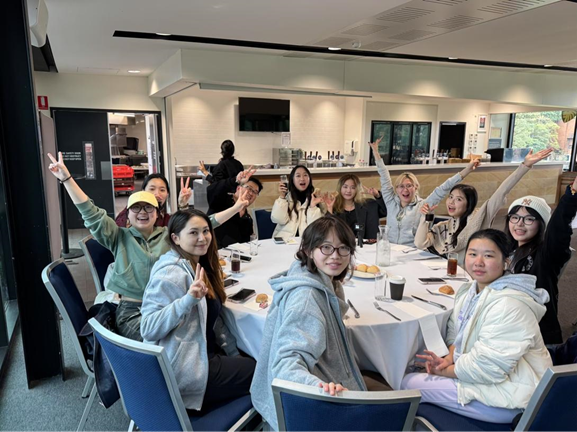
4. Student Reflections
"Thirty days in Sydney was a gentle adventure. It showed me the vastness of the world and taught me to make peace with myself—I no longer fear making mistakes or the unknown, but embrace every moment with an open mind. I gained better English skills, but more importantly, I found the courage and confidence to express myself.
What this time taught me is not just how to speak English well, but how to be brave enough to be myself. This was no ordinary summer vacation—it was the most precious gift of my life. It made me understand that growth is not about how many places you visit, but about meeting a better version of yourself every time you set out. The wind of Sydney will remember these stories of courage and warmth; they will be engraved in my memory forever, like stars lighting my way forward."
—Student from School of Management
"Looking back on this exchange experience, I realize more clearly that it was not just a learning journey, but a life practice. The University of Sydney’s classrooms taught me how to ask questions and find balance among different perspectives; the diverse cultural environment helped me understand the value and logic behind differences; homestays and daily life taught me to be independent and adaptable in an unfamiliar place. All of this has made me more resilient, inclusive, and confident.
In the future, I hope to apply the experiences from this exchange to my subsequent studies and research. Whether it’s standardizing academic writing or building confidence and inclusiveness in cross-cultural communication, these will be precious assets for my continued growth."
—Student from School of Foreign Languages
Final Thoughts
The University of Sydney study program was undoubtedly a journey of profound growth. It helped students not only break through the limitations of "passive acceptance" in their majors and develop hard skills like active learning and cross-cultural collaboration but also let go of the shackles of "fear of making mistakes and fear of the unknown" emotionally—gaining the courage to express themselves, the tolerance to understand differences, and a new understanding of "growth".
As students shared, the gains here were not just improved English skills or accumulated professional techniques, but also the confidence to "be brave enough to be myself", the tolerance to "connect gently with the world", and a fresh perspective on growth.
With this, our summer study program reviews come to an end. Looking at the entire series—from the historical depth of European streets, the diverse vitality of Asian neighborhoods, and the innovative atmosphere of American cities to the blend of nature and culture in Oceania—the landscapes of different regions vary, but the core of growth remains consistent. These experiences turned "the world" from a textbook noun into a tangible classroom, a conversational friend, and digestible insights. They taught students to find resonance in differences and break through themselves in challenges.
These study stories scattered across the globe are not only precious marks of the students’ youth but also a reflection of our university’s original mission: to promote international exchanges and cultivate interdisciplinary talents with a global perspective. In the future, we will continue to build bridges to the world. We look forward to more students setting out with curiosity and courage—to encounter different landscapes, engage with diverse cultures, and above all, find their own answers to growth in the vast world and write more wonderful chapters of youth.






